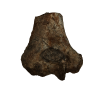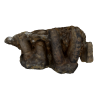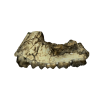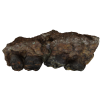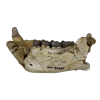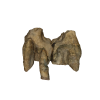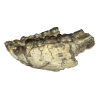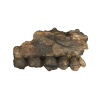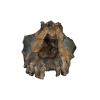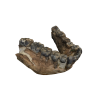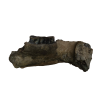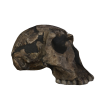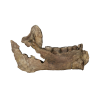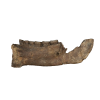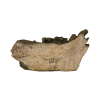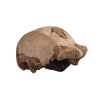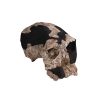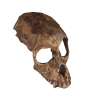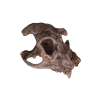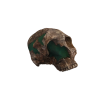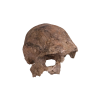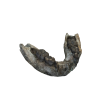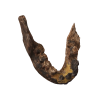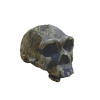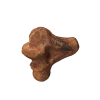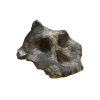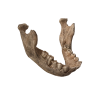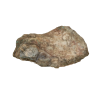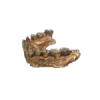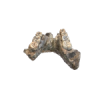This extraordinary discovery was made by team member, Peter Nzuve on September 10th, 1994, when his sharp eyes spotted the well-camouflaged rows of teeth among the pebbles that blanket the surface of the ground at Kanapoi. Richard Leakey, who was then Director of the Kenya Wildlife Service, was visiting the expedition for the weekend and was advising and helping Meave, Kamoya Kimeu and Peter Nzuve, in the plastering and lifting of a large elephant skull. After several hours with the elephant skull during which Meave, Kamoya and Peter were enjoying the rare pleasure of having Richard Leakey once more in the field, Peter Nzube went off to check on another screen and excavation in progress. He had not gone far before he came running back with the exciting news of this hominid find. Richard Leakey excavated this beautifully preserved mandible with full dentition. This is the type specimen of Australopithecus anamensis named after the Turkana word “Anam” which means “Lake” in recognition of the proximity of Kanapoi to Lake Turkana and also after the extensive 4 million old Lonyomun Lake deposits at Kanapoi. The small adult mandible and parallel tooth rows are very primitive and ape-like but the recovery at Kanapoi of a partial lower leg bone, KNM-KP 29285, shows very clearly that the human ancestor was indeed walking on two legs.
Australopithecus anamensis is a possible ancestor to Australopithecus afarensis found further north in Ethiopia. Although the fossil record from this time period is less well known, the Kanapoi sites have provided a wealth of hominin fossils and fauna.
Australopithecus anamensis at Kanapoi is dated between 4.1 and 4.2 million years. Several specimens have also been recovered from slightly younger sites, 3.9 million years at Alia Bay on the east side of Lake Turkana.



